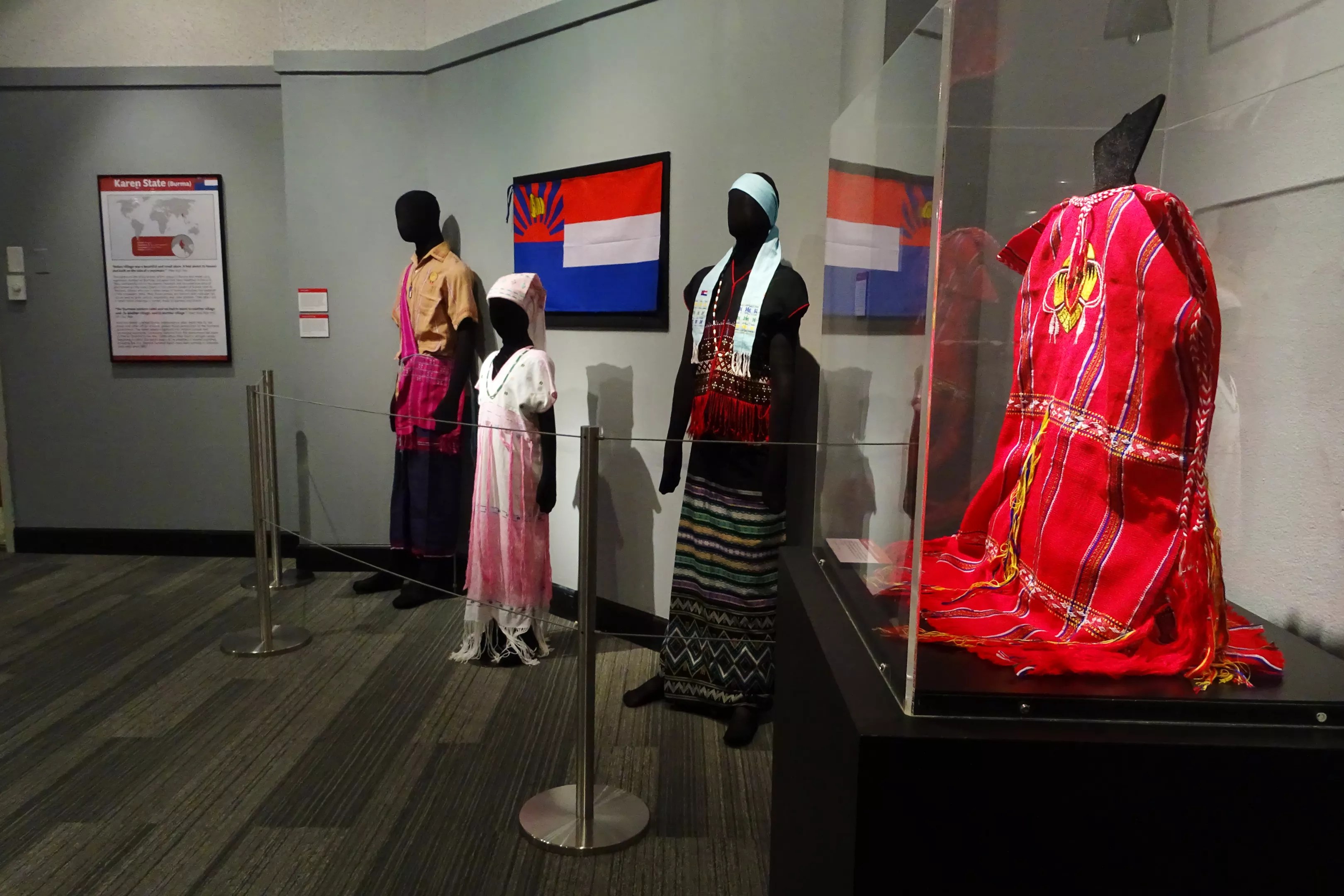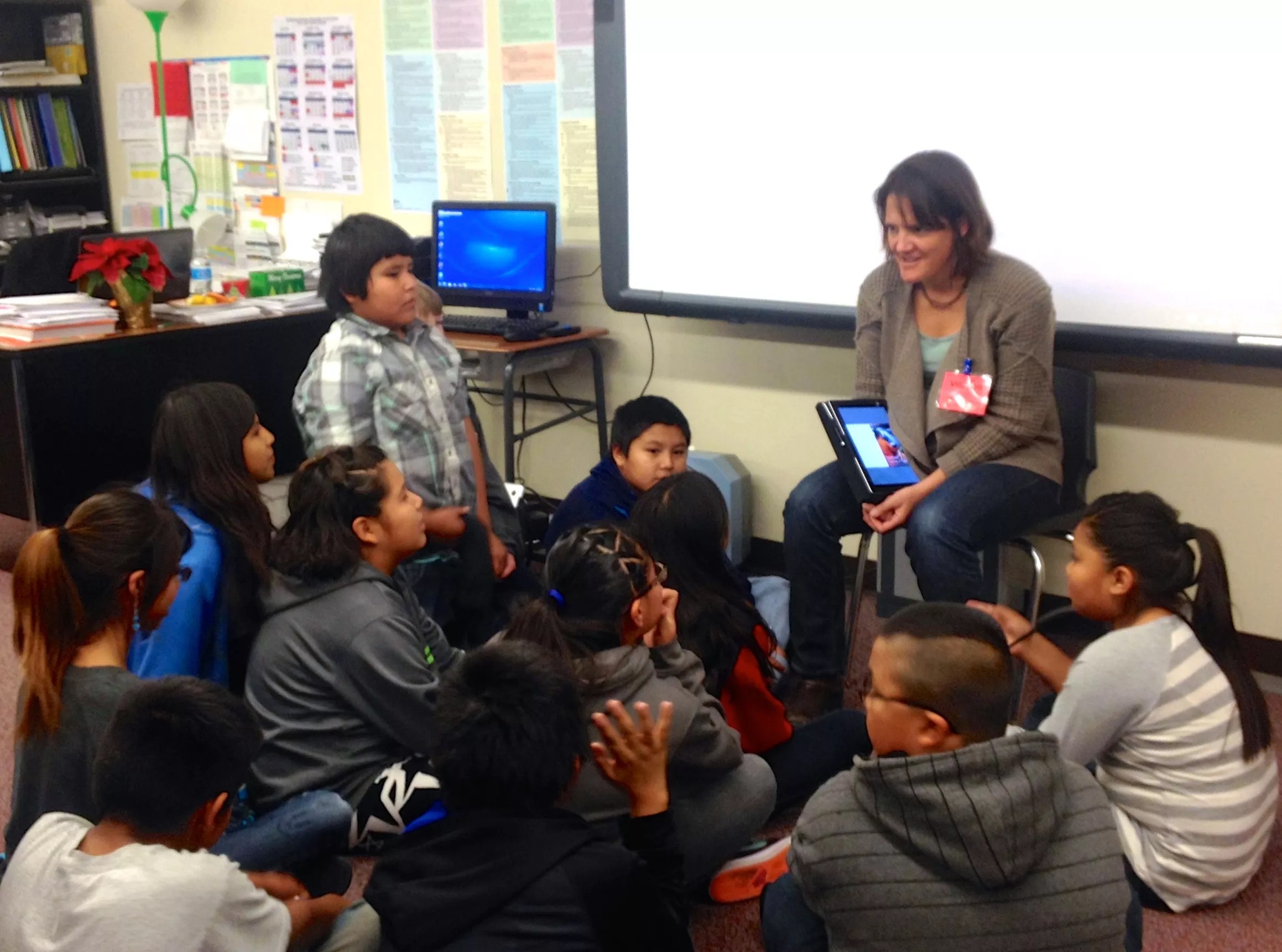
Aurora History Museum

Audio By Carbonatix
A new Aurora History Museum exhibit that showcases the stories of immigrants and refugees has a message for America: Leaving homes and communities for the United States isn’t easy, and often isn’t by choice.
The exhibit, Write Our World: Crawford Elementary School, highlights the stories of persecution and triumph that brought immigrant and refugee children from all over the world – including Nepal, Bhutan, Burma Somalia – to Crawford Elementary School in Aurora, where 95 percent of the students are minorities and 75 percent are English learners.
Dozens of stories written by elementary students are presented in e-books, both in their native language and English. Families also loaned artifacts from their refugee experiences for the exhibit, including traditional clothes, religious artifacts and a collection of pots and pans stained from heavy use in refugee camps.
Kate Garvin, the Crawford Elementary community liaison, explains that the exhibit grew from a program at Crawford, Write Our World, that encourages immigrant and refugee children to write about their family histories. Through their work, students often learn about experiences that their parents never shared with them: living under persecution, being driven from homes and villages, subsisting on humanitarian aid in refugee camps. The ten-week program then provides an opportunity for parents to meet with their children and to talk about their journeys to the U.S.
Will you step up to support Westword this year?
At Westword, we’re small and scrappy — and we make the most of every dollar from our supporters. Right now, we’re $22,000 away from reaching our December 31 goal of $50,000. If you’ve ever learned something new, stayed informed, or felt more connected because of Westword, now’s the time to give back.

Refugees account for 75 percent of Crawford Elementary’s student body.
Write Our World
“We start learning about their stories – where they come from, who they are – and we get families from different immigrant communities together in the same space,” says Garvin. “Crawford is a very special place; we have lots of amazing diversity, so they get to learn from each other, not from a book.”
Some of the stories are simple descriptions of life back in a native country, while others describe the terror of being forced to flee from a home to escape armed militias. Together, the accounts create a colorful and complex mosaic of immigration stories, where patterns are often hard to find: These immigrants came to the U.S. by different means and for different reasons.
Subach Nepal, a teacher at Crawford who worked with Nepalese immigrants, recognizes that the project had special challenges. “There were very difficult stories,” he says. “Some of them were really dark, so it was all about making sure that parents show us what they are okay with.”
One of the stories in the exhibit details the struggle of two Burmese refugees who were persecuted for their identity as Karen people – an ethnic minority that was forced out of its communities in the mid-1980. “The Burmese soldiers came and we had to move to another village and…to another village… and to another village,” wrote Hser Nay Paw and Eh Gay Paw, who have a child enrolled at Crawford, in a piece meant to provide context for the Karen children’s stories.
T. Scott Williams, the museum’s director, says he had an “amazing and challenging” experience working with the parents to present some of their possessions and cultural artifacts in the exhibit. “Some of the kids also needed interpreters along with their parents…. and it was challenging to ask families to lend their possessions to us,” he recalls. “But Crawford really established that trust with the families. Without them, it would have taken much longer.
“It really has been incredible to learn about Aurora’s diversity and different communities,” Williams adds.
Aurora is a minority-majority city, meaning that people of color outweigh the white population. The city has also welcomed thousands of immigrants and refugees, and 20 percent of its residents were born outside of the U.S – up from 14 percent just seven years ago.
The free exhibit will be open until September 20; a related exhibit, Picture Me Here: Stories of Hope and Resilience by Refugees and Immigrants, will be up through September 22. Find out more at auroramuseum.org.